Ayurveda botanicals in COVID-19 management: An in silico multi-target approach
- PMID: 34115763
- PMCID: PMC8195371
- DOI: 10.1371/journal.pone.0248479
Ayurveda botanicals in COVID-19 management: An in silico multi-target approach
Abstract
The Coronavirus disease (COVID-19) caused by the virus SARS-CoV-2 has become a global pandemic in a very short time span. Currently, there is no specific treatment or vaccine to counter this highly contagious disease. There is an urgent need to find a specific cure for the disease and global efforts are directed at developing SARS-CoV-2 specific antivirals and immunomodulators. Ayurvedic Rasayana therapy has been traditionally used in India for its immunomodulatory and adaptogenic effects, and more recently has been included as therapeutic adjuvant for several maladies. Amongst several others, Withania somnifera (Ashwagandha), Tinospora cordifolia (Guduchi) and Asparagus racemosus (Shatavari) play an important role in Rasayana therapy. The objective of this study was to explore the immunomodulatory and anti SARS-CoV2 potential of phytoconstituents from Ashwagandha, Guduchi and Shatavari using network pharmacology and docking. The plant extracts were prepared as per ayurvedic procedures and a total of 31 phytoconstituents were identified using UHPLC-PDA and mass spectrometry studies. To assess the immunomodulatory potential of these phytoconstituents an in-silico network pharmacology model was constructed. The model predicts that the phytoconstituents possess the potential to modulate several targets in immune pathways potentially providing a protective role. To explore if these phytoconstituents also possess antiviral activity, docking was performed with the Spike protein, Main Protease and RNA dependent RNA polymerase of the virus. Interestingly, several phytoconstituents are predicted to possess good affinity for the three targets, suggesting their application for the termination of viral life cycle. Further, predictive tools indicate that there would not be adverse herb-drug pharmacokinetic-pharmacodynamic interactions with concomitantly administered drug therapy. We thus make a compelling case to evaluate the potential of these Rasayana botanicals as therapeutic adjuvants in the management of COVID-19 following rigorous experimental validation.
Conflict of interest statement
Authors (AG and LH) are affiliated with Pharmanza Herbals Pvt. Ltd. The herbal extracts used in the study are a marketed product of Pharmanza Herbals Pvt. Ltd. This does not alter our adherence to PLOS ONE policies on sharing data and materials.
Figures


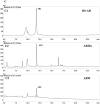






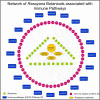
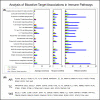
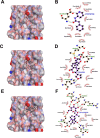
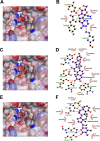


References
-
- WHO announces COVID-19 outbreak a pandemic. [cited 23 Apr 2020]. Available: https://www.who.int/dg/speeches/detail/who-director-general-s-opening-re...
-
- Q&A on coronaviruses (COVID-19). [cited 23 Apr 2020]. Available: https://www.who.int/news-room/q-a-detail/q-a-coronaviruses
-
- Wu Z MJ. Characteristics of and important lessons from the coronavirus disease 2019 (COVID-19) outbreak in China: summary of a report of 72 314 cases from the Chinese Center for Disease Control and Prevention. Jama. 2020. - PubMed
Publication types
MeSH terms
Substances
LinkOut - more resources
Full Text Sources
Medical
Miscellaneous

